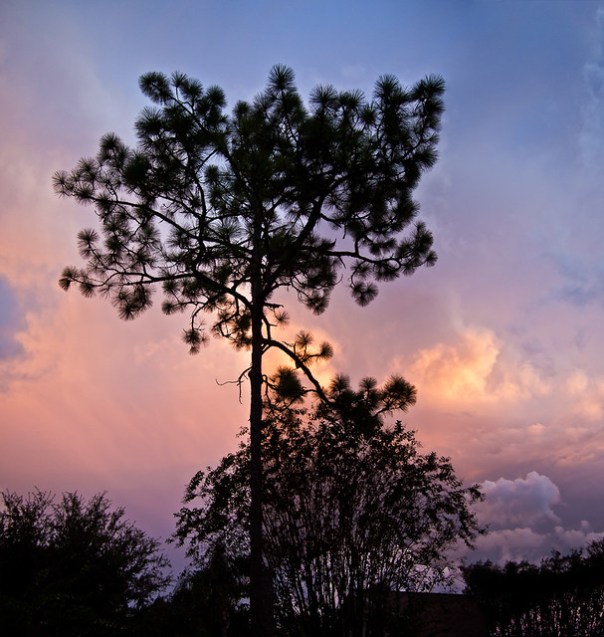Well, the weather report for this morning was clear, cool and windy – but whoever arranges the weather didn’t pay attention. They got the cool and windy part right, but it was very cloudy on the east coast with occasional light rain. We persevered and ended up having a great time at the Merritt Island National Wildlife Refuge.
We arrived a bit before sunrise and had time to scout new locations along Peacock’s Pocket Road. I brought an Olympus E-PL1 camera that I had converted to Infra Red by LifePixel. I’ve dabbled in IR before – both film and digital, but this is my first experience with a modified digital camera and I think I’m going to like it. Here’s a sample:

Somewhere along Peacock’s Pocket Road – In the Merritt Island National Wildlife Refuge. Infra Red capture, converted to B&W
Our next stop was the MINWR Visitor’s Center. Painted Buntings migrate to the Refuge in the winter and are often seen there. Sure enough, there was one – and I was able to get a photo, although the light was very poor. These are amazingly colorful little birds!

Painted Bunting – At the MINWR Visitor’s Center. My first sighting and photo of one.
While there we also saw another bird that I didn’t recognize. It turns out this is a White Crowned Sparrow and they’re supposedly quite rare in Florida. My second life bird of the day!

White Crowned Sparrow – Sighted at the MINWR Visitor’s Center even though both iBird and Peterson’s guides say this bird isn’t found in Florida. My first sighting and photo of one.
Before heading home via Cracker Barrel, we also took a turn round Black Point Wildlife Drive. All together, we saw a large variety of birds: Ospreys, a Bald Eagle, Great Blue Herons, Tri-Color Herons, Snowy Egrets, Great Egrets, Reddish Egrets, Belted Kingfishers, Coots, Grebes, Grackles, Vultures, Anhingas, Cormorants, Moorhens, Painted Buntings, White Crowned Sparrows, Wood Storks, a Raccoon, and more. Another wonderful visit to MINWR!
You can see more of my photos in this MINWR set on Flickr.
Thanks for stopping by and reading my blog. Now – go make some photos!
©2011, Ed Rosack. All rights reserved





















